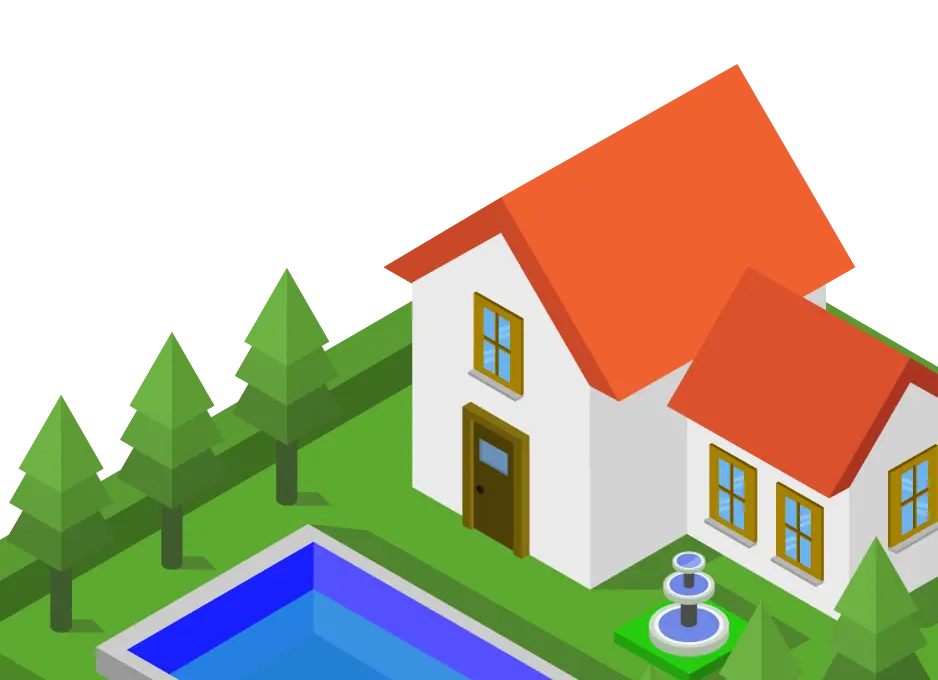Termites in the South: Understanding Their Importance and How to Safeguard Your Home

As Southern temperatures rise and winter gives way to spring, termite season begins in full force. The warm, humid climate of the South creates the perfect environment for termites to thrive, making proactive protection crucial for homeowners. In this guide, we’ll explore the role termites play in nature, their destructive potential, and how you can protect your largest investment—your home.
With the right prevention and professional support, you can safeguard your property and regain peace of mind knowing your home is protected.
The Importance of Termites in the Ecosystem
Termites play a vital role in breaking down cellulose, which helps recycle decaying plant material back into the ecosystem (Britannica). Their ability to decompose wood and other organic materials is essential for maintaining healthy soil and supporting new plant growth.
But when termites shift from decaying logs in the forest to the wooden structures of your home, they go from beneficial to destructive—and fast.
Why Termites Are a Bigger Threat in the South
The South’s warm, moist environment provides ideal conditions for termite species like subterranean and Formosan termites. These species are particularly prevalent and destructive due to their large colonies and relentless appetite for wood.
In the South, it’s not a matter of if you’ll get termites; it’s a matter of when. Without proactive prevention, these pests can cause significant structural damage before homeowners even realize they’re there.
- Eastern Subterranean Termites: Found throughout the South, these termites live in underground colonies and build mud tubes to access above-ground food sources. They cause more damage than any other termite species, sometimes collapsing entire buildings (PestWorld).
- Formosan Termites: Known for their aggressive nature, Formosan termites can consume one foot of 2×4 wood in less than a month. Their colonies contain hundreds of thousands of members, making them a major threat to structures (National Pest Management Association).
The Cost of Ignoring Termite Prevention
Termites cause $6.8 billion in property damage annually in the U.S., a cost typically not covered by homeowners’ insurance. Given the high cost of repairs, investing in prevention through regular inspections and proactive measures can ultimately save homeowners thousands of dollars.
How to Identify Common Termite Species in the South
While several termite species thrive in the South, each has unique behaviors and risks. Understanding their differences can help homeowners recognize early warning signs and take action.
- Subterranean Termites: Build mud tubes along foundations and walls to travel from soil to wood.
- Formosan Termites: Often found in large underground colonies and known for aggressive wood consumption.
- Drywood Termites: Create colonies directly in wood and leave behind small piles of droppings known as frass.
Signs of a Termite Infestation
- Mud tubes along your foundation or walls
- Hollow-sounding wood when tapped
- Discarded wings near windows or doors
- Uneven or bubbling paint on walls
If you notice any of these signs, it’s essential to act quickly. Contacting a professional pest control service like Cook’s can prevent further damage and ensure proper treatment.
Proactive Termite Prevention Tips
Protecting your home starts with preventive measures:
- Reduce moisture: Fix leaks, repair roof damage, and ensure proper drainage around the home (National Pest Management Association).
- Seal entry points: Caulk cracks in walls, foundations, and around windows.
- Maintain wood-soil separation: Keep a 12-18-inch gap between soil and wood portions of the home.
- Store firewood properly: Keep it at least 20 feet away from your house.
“An annual termite inspection is crucial for homeowners in the South,” says Stephen Gates, Entomologist and VP or Technical Services at Cook’s Pest Control.
Why DIY Solutions Fall Short
DIY methods, such as applying over-the-counter pesticides or placing bait traps, often only address surface-level infestations. Termites are notorious for hiding in walls and under floors, making them difficult to erliminate without professional expertise.
- Limited Effectiveness: Store-bought treatments often target visible pests but miss the larger colony.
- Health Risks: Misapplied chemicals can be hazardous to humans and pets.
- Hidden Infestations: Without thorough inspections, colonies can remain undetected until severe damage occurs.
Why Choose Cook’s Pest Control?
- Southern Expertise: Our team understands the unique termite challenges of the South where warm, humid conditions create an ideal breeding ground for infestations. We apply region-specific treatments designed to provide maximum protection.
- Expert Inspections: Cook’s professionals conduct detailed inspections to detect termite activity.
- Advanced Technology: Our exclusive use of the Sentricon® System provides long-term protection with environmentally friendly bait stations.
- Customer-First Approach: With over 90 years of trusted service, we provide follow-up visits and tailored prevention plans for homes and businesses.
When to Treat for Termites
The best time to treat for termites is now. Proactive prevention is key. If you suspect an infestation, immediate treatment is necessary to limit damage.
Protect Your Home with Cook’s Pest Control
Termites don’t wait—and neither should you. Protect your investment with proactive prevention and professional treatment from Cook’s Pest Control.
Call us today at 888-321-9566 to get your free quote. Learn more about our residential and commercial services at Cook’s Pest Control.
